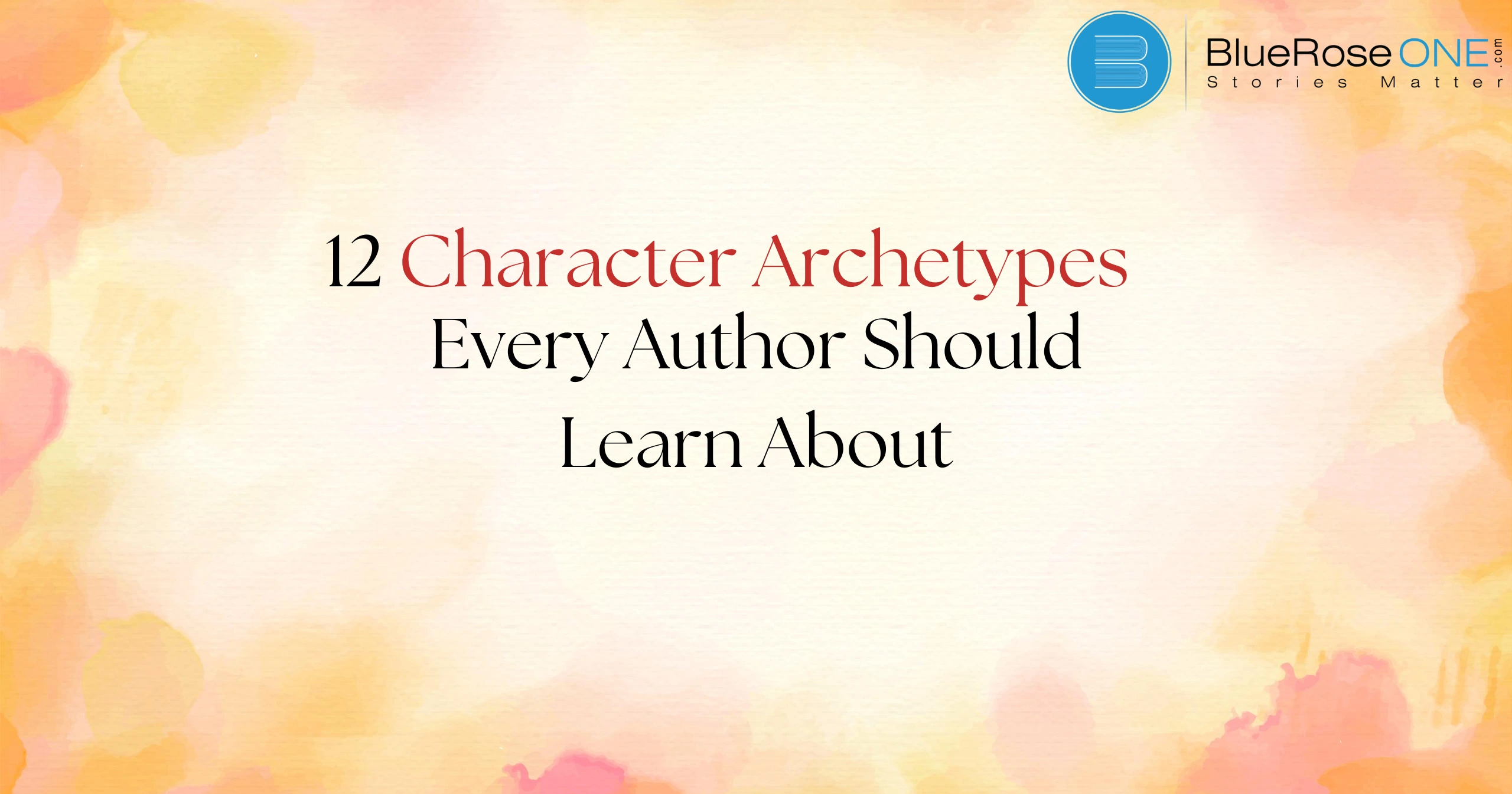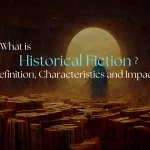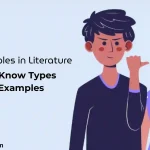Your aim as a writer is to develop characters that readers will find interesting, memorable, and relatable. Making use of character archetypes is one of the finest methods to accomplish this. These are common roles that may be found in mythology, literature, and movies.
They all have distinct characteristics that let us relate to and recognize them. Understanding these archetypes can help you build a solid basis for character development whether you’re writing a gripping mystery or a hero’s journey.
What Are Character Archetypes?
Character archetypes are recurrent, widely recognized patterns in characters. Stories from all countries and times have portrayed a variety of characters in these positions, from the fearless hero to the sage mentor. These are fundamental types that embody fundamental human drives and behaviors, not stereotypes.
Why Knowing Archetypes Matters for Authors
Authors can provide room for creativity but yet create characters that readers would recognize right away by using an understanding of archetypes. Starting with archetypes, you may create multifaceted characters that grow, face challenges, and ultimately capture the attention of your audience.
You may also like: How to Get More Book Reviews in 2025: Proven Tips for Authors

The 12 Essential Character Archetypes
1. Hero
Among the most well-known character archetypes is the Hero. This archetype, which frequently embarks on a quest to accomplish a lofty objective, is a symbol of bravery, strength, and tenacity.
Heroes overcome obstacles, develop through misfortune, and come out on top, emulating virtues like bravery and selflessness. Heroic figures are those who are motivated by a desire to save others, such as Frodo Baggins and Harry Potter. Since the hero’s journey is a common plot device, writers must be familiar with this archetype.
Traits of a Hero
Heroes are courageous, determined, and typically seek justice or personal improvement. They face obstacles that test their strength and morals.
Famous Examples in Literature
- Frodo Baggins in The Lord of the Rings
- Harry Potter in Harry Potter
- Katniss Everdeen in The Hunger Games
The Mentor
One of the most significant character archetypes is the Mentor, who offers the protagonist guidance, training, and assistance along the way. Frequently regarded as an accomplished individual, the Mentor aids the hero in acquiring the abilities required to surmount challenges.
This character archetype can take on many different roles, such as advisor, teacher, or guardian, but their constant function is to encourage the main character’s development and help them succeed.
The Mentor’s Role in the Hero’s Journey
Mentors serve as teachers or protectors. They appear to help the Hero at crucial moments, offering guidance that may be cryptic but essential.
Examples of the Mentor Archetype
- Gandalf in The Lord of the Rings
- Obi-Wan Kenobi in Star Wars
- Dumbledore in Harry Potter
The Everyman
Among the most relatable character archetypes is the Everyman. This archetype stands for the common person, someone without exceptional abilities or special capabilities who yet manages to get by in life by being persistent and using common sense. Because the Everyman reflects genuine human emotions, hardships, and daily obstacles, readers may relate to him.
These characters are crucial to many stories because they frequently change as a result of their experiences. Two well-known examples are Arthur Dent from Hitchhiker’s Guide to the Galaxy and Frodo Baggins from The Lord of the Rings.
Characteristics of the Everyman
Humble, approachable, and grounded, the Everyman doesn’t seek glory but is often called to action out of necessity.
Examples of the Everyman Archetype
- Bilbo Baggins in The Hobbit
- Arthur Dent in The Hitchhiker’s Guide to the Galaxy
- Winston Smith in 1984
You may also read: Top 10 Hugo Award-Winning Novels You Must Read
The Rebel
One of the most interesting character archetypes in literature is the Rebel. The Rebel, motivated by a desire to question the current quo, frequently opposes injustice, authority, and social conventions.
As they work to bring about change, even if it means breaking the norms, this archetype adds excitement and drama to the story. Literary rebels who are well-known include Katniss Everdeen from The Hunger Games, who opposes repressive institutions in the sake of survival and independence.
How Rebels Shake Up the Status Quo
Rebels challenge the established order, sparking conflict and pushing the boundaries of what is acceptable or possible.
Notable Examples of Rebel Characters
- Han Solo in Star Wars
- Lisbeth Salander in The Girl with the Dragon Tattoo
- V in V for Vendetta
The Lover
One of the most intense and emotional character archetypes is the Lover, who is motivated by a strong need for affection and connection. They place a high value on relationships and are frequently driven by love, fidelity, or the anxiety of losing the people they hold dear.
Although their loyalty may be a source of strength, it can also make them vulnerable or cause them pain. Characters such as Romeo from Romeo and Juliet, who personifies passionate romantic devotion, are examples of the Lover archetype.
Defining Traits of the Lover Archetype
Lovers are passionate, empathetic, and sometimes overly idealistic. Their devotion can be their strength, but also their vulnerability.
Popular Examples of Lovers in Stories
- Romeo and Juliet in Romeo and Juliet
- Jack and Rose in Titanic
- Gatsby in The Great Gatsby
You may also read: Best Udemy Courses for Self-Published Authors
The Caregiver
One of the most altruistic character types is the caregiver, who is motivated by a desire to support and look out for the welfare of others. They frequently prioritize the needs of others over their own since they are kind, protective, and nurturing people. Caregivers might be parents, mentors, or encouraging friends in stories.
Their generosity is a strength, but if they put their own needs last, it may also become a weakness. This archetype gives the story warmth and depth on an emotional level.
The Role of the Caregiver in Narratives
Caregivers are the emotional support system for other characters, offering guidance, comfort, and safety.
Examples of Caregivers in Literature
- Samwise Gamgee in The Lord of the Rings
- Marmee in Little Women
Hagrid in Harry Potter
The Explorer
The character typology known as the Explorer is motivated by a thirst for knowledge and excitement. These personalities are always looking for new experiences, whether they come from travel or self-improvement.
They frequently question social mores and welcome change, emulating curiosity and self-reliance. Stories about explorers can be found in a variety of genres, from personal travels in contemporary fiction to grand adventures in fantasy literature.
They are a crucial character archetype in narrative because of their spirit of adventure, which encourages readers to follow their own paths and venture into the unknown.
The Explorer’s Quest for Adventure
Explorers seek fulfillment through travel, both physical and metaphorical. They challenge boundaries and push themselves to the edge of the known world.
Memorable Explorer Characters
- Indiana Jones in Raiders of the Lost Ark
- Lara Croft in Tomb Raider
- Odysseus in The Odyssey
You may also read: How to Write a Book Description That Grabs Readers
The Creater
One of the most important character archetypes in narrative is The Creator. This type, who frequently aspires to realize innovative concepts or works of art, loves creativity and inventiveness. Inventors, artists, and visionaries are examples of creators who are typically motivated by a need to express themselves.
They deal with issues like self-doubt and outside criticism, but their enthusiasm keeps them creatively inspired. Exploring character archetypes requires an understanding of the Creator archetype, which aids writers in creating rich, captivating characters that connect with readers.
How Creators Drive Innovation in Stories
Creators are inventors, artists, or visionaries who bring something entirely new into the world, often inspiring others in the process.
Well-Known Creator Characters
- Tony Stark in Iron Man
- Victor Frankenstein in Frankenstein
- Leonardo da Vinci in historical fiction
The Ruler
One of the main character archetypes that represents authority and control is the Ruler. Rulers, who are frequently portrayed as strong individuals like CEOs, monarchs, or queens, work to keep their society stable and orderly.
They are driven by a desire for success and power and thrive under command. But their fear of losing power might result in oppression or dictatorship. Authors can highlight the complexity of leadership in their novels by developing characters that readers will find engaging by using the Ruler archetype.
Characteristics of a Ruler
Rulers can be benevolent kings or tyrannical dictators. Their primary goal is maintaining order and ensuring the continuity of their domain.
Examples of the Ruler Archetype in Fiction
- King Arthur in Le Morte d’Arthur
- Tywin Lannister in Game of Thrones
- President Snow in The Hunger Games
You may also like: List of Nobel Prize Winners in India (Updated)
The Innocent
One of the twelve fundamental character archetypes is the Innocent, who represents innocence, hope, and the pursuit of happiness.
This character has a strong desire to do good and views the world with optimism and trust. Their activities are motivated by their persistent trust in goodness, even in the face of circumstances that threaten their idealism.
Characters like Forest Gump and Dorothy from The Wizard of Oz are frequent examples. By highlighting the value of innocence in storytelling, authors can create characters that readers can relate to by using the Innocent archetype.
The Innocent’s Hope and Optimism
Innocents are trusting, pure, and often act as a moral compass within stories. They’re not jaded by life’s challenges and remain hopeful.
Famous Innocent Characters in Literature
- Dorothy in The Wizard of Oz
- Pip in Great Expectations
- Forrest Gump in Forrest Gump
The Jester
The Jester is a lighthearted and entertaining character archetype that frequently adds humor and levity to a narrative. This figure exposes the truth with humor and satire, challenging the status quo. Jesters, with their playful manner, frequently serve as a source of wisdom, reminding us not to take life too seriously.
They are crucial in a variety of storylines since they serve to emphasize life’s absurdity. Comprehending the Jester as a fundamental character archetype can enhance your narrative and proficiently captivate your viewers.
How the Jester Brings Humor and Insight
Jesters use wit and playfulness to expose the absurdities of life, often holding a mirror up to serious situations.
Iconic Jester Characters
- The Joker in Batman
- Tyrion Lannister in Game of Thrones
- Puck in A Midsummer Night’s Dream
You may also like: Top 10 ELF Name Generators for Fantasy Writers
The Sage
One of the twelve fundamental character archetypes, the Sage stands for insight, knowledge, and wisdom. This character frequently acts as a mentor or advisor, assisting other characters in overcoming obstacles and comprehending difficult realities.
Sages are crucial for character development and story advancement since they usually have extensive knowledge and may provide insightful counsel. Yoda from Star Wars and Gandalf from The Lord of the Rings are two examples.
Authors can enhance their stories and provide their characters valuable life lessons by utilizing the Sage archetype.
Wisdom of the Sage Archetype
Sages are thinkers and advisors who rely on intelligence and foresight to guide others. They may not act, but their wisdom is indispensable.
Examples of Sage Characters in Stories
- Yoda in Star Wars
- Professor X in X-Men
- Merlin in Arthurian legends
How to Use Character Archetypes in Your Writing
Although archetypes offer a solid basis for character development, they ought to be viewed as a guide rather than a constraint. Combine archetypes to create characters that are more distinctive and complicated. A hero could possess the knowledge of a sage or the rebellious streak of a rebel, for instance.
You may also like: The pack’s Weirdo: A Mystery to Unveil a BookMudita Upreti
Conclusion
Any writer can use character archetypes as a valuable tool by understanding them. These archetypes give your characters nuance, which helps readers identify with and remember them. Don’t be scared to play around with archetypes while you write your novel to build compelling, long-lasting characters.
















